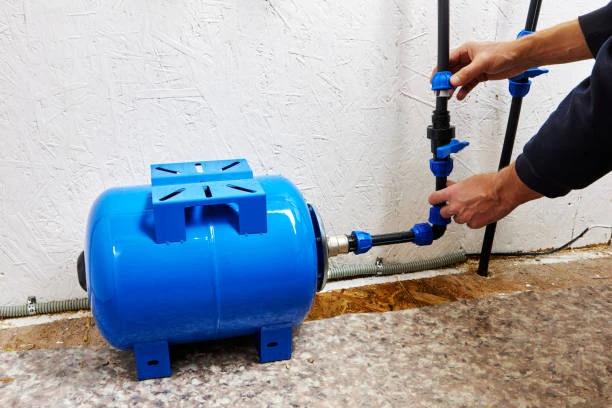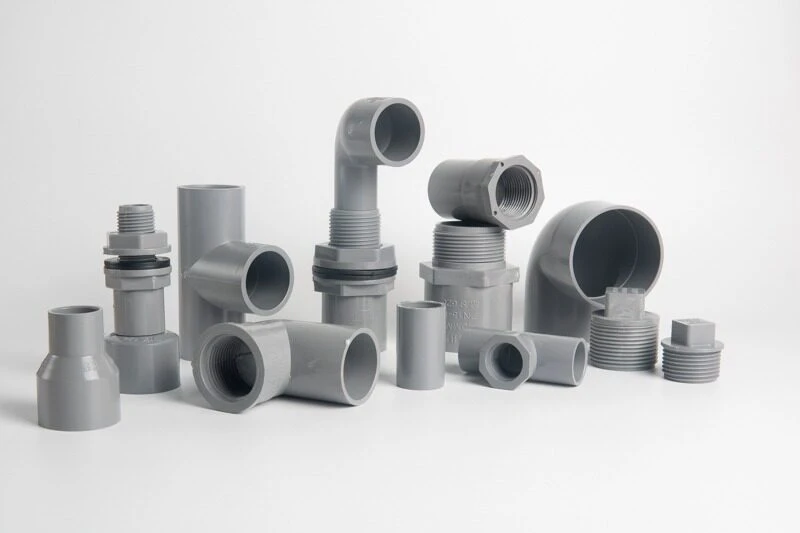Introduction
HDPE pipe fitting have gained significant prominence in the global market due to their durability, corrosion resistance, and eco-friendliness. With the South African Plastic Pipe Manufacturers Association (SAPPMA) unveiling its 2024 market study, the spotlight is back on these resilient pipe systems. HDPE pipes, particularly in industries such as construction, water management, and infrastructure development, are seeing an increasing demand globally, and SAPPMA’s study sheds light on future trends, market size, and the competitive landscape for this important sector.
What is HDPE Pipe Fitting?
HDPE pipe fitting are components made from high-density polyethylene that connect different sections of pipes. They ensure a secure flow of fluids, especially water and gas, by joining pipes in a network. These fittings are highly valued for their flexibility, resistance to corrosion, and long-term durability.
SAPPMA and Its Role in the HDPE Market
SAPPMA plays a pivotal role in ensuring the quality and standardization of plastic pipes in South Africa. Through its market studies, SAPPMA helps manufacturers, suppliers, and users understand the growth patterns and evolving demands of the HDPE pipe fitting market. The 2024 study released by SAPPMA offers valuable insights into market trends and future projections.
Key Findings of SAPPMA’s 2024 Market Study
1. Global HDPE Pipe Fittings Demand
SAPPMA’s study predicts significant growth in global demand for HDPE pipe fittings in the next few years. This increase stems from expanding infrastructure in developing economies and the need for sustainable water management solutions. Additionally, urbanization projects worldwide contribute to this rising demand.
2. Market Segmentation
The market is segmented based on the application, type, and region. Key application areas include water supply, sewage systems, and gas pipelines. HDPE pipe fittings are also used extensively in mining, chemical processing, and agriculture.
- By Application: Water management is the largest application segment, driven by global efforts to ensure safe and clean water supplies.
- By Type: Elbows, tees, reducers, and valves are some of the primary types of HDPE pipe fittings used in various applications.
- By Region: Asia-Pacific dominates the HDPE market due to rising urbanization and government investments in infrastructure.
3. Innovations in HDPE Technology
One of the report’s highlights is the innovation occurring in HDPE manufacturing technologies. New advancements include the development of eco-friendly HDPE materials, increased use of recycled plastic, and the introduction of new fitting designs that enhance the system’s efficiency and longevity.
4. Competitive Landscape
SAPPMA’s study also highlights the competitive landscape in the HDPE fittings market, pointing out that several key players, including global giants and local manufacturers, are investing heavily in research and development. As the demand for high-quality, reliable pipe systems grows, competition in the sector has intensified.
Advantages of HDPE Pipe Fittings
1. Durability and Longevity
HDPE fittings are highly durable, with a lifespan of up to 50-100 years, depending on the application and conditions. This makes them ideal for infrastructure projects that require long-term solutions.
2. Corrosion Resistance
Unlike metal pipes, HDPE pipe fitting do not corrode or degrade over time. This resistance to corrosion extends their lifespan and reduces maintenance costs.
3. Flexibility
HDPE pipe systems are flexible and can be bent to fit around obstacles, reducing the need for additional fittings and making installation easier.
4. Environmental Benefits
HDPE pipe fittings are recyclable and help reduce the carbon footprint of large infrastructure projects. Their lightweight nature also minimizes energy consumption during transportation and installation.
Challenges Facing the HDPE Pipe Fittings Market
1. High Initial Costs
Although HDPE fittings offer long-term benefits, the initial costs can be higher compared to other materials like PVC or metal. This is a barrier for some projects, especially those with tight budgets.
2. Skilled Labor Requirement
Installation of HDPE pipe systems requires skilled labor, especially for larger projects. The availability of trained personnel can be a challenge in certain regions, limiting the adoption of HDPE pipe fittings.
3. Competition from Alternative Materials
Materials like PVC and steel still dominate certain markets, offering stiff competition to HDPE. However, the increasing awareness of the environmental benefits of HDPE is slowly shifting preferences.
Future of HDPE Pipe Fittings
1. Growing Infrastructure Projects
The demand for HDPE pipe fittings is expected to rise significantly with increased infrastructure projects, especially in developing countries. Government investments in water and gas infrastructure will likely drive this growth.
2. Sustainability Trends
With a growing focus on sustainability, HDPE pipes are seen as an eco-friendly alternative. The shift towards greener solutions and the increasing usage of recycled plastics in HDPE fittings will contribute to market growth.
3. Advances in Manufacturing
Technological advancements in HDPE pipe fitting manufacturing will produce higher-quality products. These improvements will enhance their appeal in the global market.

Why HDPE Pipe Fittings are Preferred in Water and Gas Networks
People increasingly prefer HDPE pipe fittings for water and gas supply networks. Their superior resistance to chemicals, flexibility, and ability to withstand high pressures drive this choice. Additionally, HDPE fittings prevent leakage, which is critical for maintaining system integrity and reducing resource wastage.
Global HDPE Pipe Fittings Market Outlook
The global HDPE pipe fittings market is poised for substantial growth over the next decade. The Asia-Pacific region will continue to lead the market, driven by government infrastructure initiatives and the expansion of urban areas. Europe and North America will also see significant demand as aging infrastructure is replaced.
Conclusion
SAPPMA’s 2024 market study on HDPE pipe fittings provides valuable insights into the growth and potential of the HDPE fittings market. With rising demand for sustainable and durable piping solutions, HDPE pipe fittings are becoming an essential component in various industries. The combination of innovation, environmental benefits, and long-term cost savings makes HDPE pipe fittings a preferred choice for infrastructure development globally.
FAQs
1. What are the advantages of HDPE pipe fittings over PVC?
HDPE pipe fittings offer greater flexibility, durability, and environmental benefits compared to PVC, making them ideal for long-term infrastructure projects.
2. Are HDPE pipe fittings suitable for underground installation?
Yes, HDPE pipe fittings are commonly used for underground installations due to their flexibility and resistance to corrosion and external pressure.
3. How long do HDPE pipe fittings last?
HDPE pipe fittings have an estimated lifespan of 50 to 100 years, depending on the conditions and application.
4. Can HDPE pipe fittings be recycled?
Yes, HDPE pipe fittings are recyclable, making them a more environmentally friendly option compared to some other materials.
5. What is the main use of HDPE pipe fittings in construction?
HDPE pipe fittings are primarily used in water supply systems, sewage systems, and gas pipelines due to their ability to withstand high pressures and prevent leaks.


















